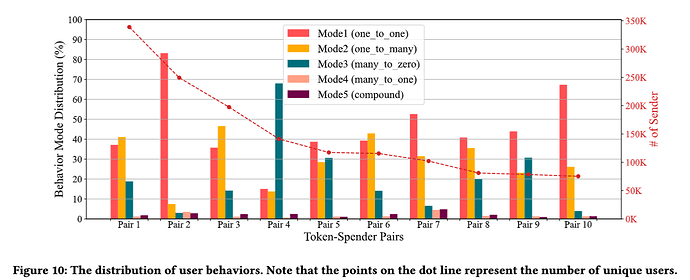ERC-20 tokens have become a popular way to represent assets and utility on the Ethereum blockchain. These smart contract tokens allow for fungibility, divisibility, and transferability according to rules.
- What is ERC-20 Allowance?
- Erc-20 Token Approval Mechanism
- How Malicious Actors Can Exploit Allowance
- Real-World Examples of Allowance-Related Risks
- Steps to Safeguard Your Wallet
- Regularly Review and Update Your Token Allowances
- Utilizing Smart Contracts With Limited Allowances
- Keeping Track of Token Approvals
- Best Practices for ERC-20 Token Security
- Using Hardware Wallets for Enhanced Security
- Double-Checking Contract Addresses Before Approving Allowances
- Educating Oneself About Potential Risks and Staying Informed
- Regularly Updating Wallet Software for Security Patches
- Case Studies
- Highlighting Real-World Incidents Related to Unlimited Erc-20 Allowance Risks
- Analyzing the Impact of These Incidents on Users and the Broader Crypto Community
- Extracting Key Lessons From Case Studies for Improved Security Practices
- Conclusion
However, when approving an ERC-20 token contract to spend your tokens, it’s important to undersrand about Erc-20 allowance risks and set a limited allowance rather than an unlimited allowance. An unlimited allowance gives the contract access to all your tokens, creating risk if the contract is compromised.
Safeguarding your wallet’s private keys is critical for protecting your crypto assets, including ERC-20 tokens. Make sure to use a hardware wallet and strong passphrases. Never share your private keys. Be cautious when approving contracts and set reasonable limits on token allowances. Taking precautions allows you to benefit from the features of ERC-20 tokens while minimizing risks. Following security best practices will help keep your tokens secure.
What is ERC-20 Allowance?
Erc-20 Token Approval Mechanism
The ERC-20 standard requires a token owner to approve a spender before tokens can be transferred from the owner’s wallet.
The approval transaction specifies an allowance amount, essentially granting temporary access to the spender to move tokens on the owner’s behalf. However, the default approval is unlimited, giving the spender potential access to the owner’s entire token balance.
How Malicious Actors Can Exploit Allowance
This unlimited default allowance creates significant risks. An attacker could drain an owner’s tokens if a spender’s smart contract is compromised, hacked, or contains a bug if unlimited approval is granted. There is no limit to stopping malicious transfers. Even if the spender is trusted, coding vulnerabilities could still lead to unauthorized drainage of tokens. Setting a reasonable, limited allowance is crucial to limit potential damage.
Real-World Examples of Allowance-Related Risks
The most famous case is the DAO hack, where attackers exploited the default unlimited ERC-20 allowance to drain over 3.6 million ETH from the DAO’s smart contract, worth around $50 million. More recently, in 2022, the SHOPX protocol had a bug that allowed stealing $7 million in tokens due to unlimited approvals.
Many other Defi projects have been exploited by granting unlimited access through ERC-20 approvals. Conservative allowance limits could have mitigated the losses.
Steps to Safeguard Your Wallet
Regularly Review and Update Your Token Allowances
Using Wallet Interfaces to Manage Allowances
Wallet interfaces like MetaMask provide built-in screens to view and manage your token approvals easily. You can see allowance amounts granted to different contracts and readily reset them if no longer required. It’s good practice to review all approvals at least monthly and prune any unnecessary permissions.
Before interacting with new decentralized apps, research what allowance access is needed, then set prudent limits. For example, a farming app may only require a 0.1 token approval to stake while still securely blocking larger withdrawals. Adjust allowances up or down based on use cases. Develop a routine for ongoing allowance hygiene.
Setting Conservative Allowances for Trusted Applications
Even reputable smart contracts from eminent developers can contain flaws that leave tokens vulnerable if granted unlimited access. Whenever possible, set strict boundaries around approvals, even for trusted projects.
For example, limiting a yield optimizer to 10 tokens still lets you earn interest while capping risk from potential coding bugs. Start with minimal approvals, incrementing judiciously based on actual usage requirements. This thinking also applies to setting domestic allowances among your wallets. The mindset is minimizing attack surfaces.
Utilizing Smart Contracts With Limited Allowances
Exploring Smart Contract Options for Token Management
Innovative smart contract solutions like Allowance Manager Network give more fine-grained control for the delegation of token access. You can grant limited-time approvals automatically expiring, so tokens are recovered without manual updates.
Benefits of Using Time-Limited Allowances
One vital and major advantage of bounded-time allowances is removing the common pitfall of granting essentially permanent infinite approval. Time-limiting forces you to reassess access needs regularly. You can manually re-approve for another time or period if additional access is needed. This gives ongoing oversight.
Keeping Track of Token Approvals

Monitoring Approved Allowances Through Blockchain Explorers
Explorers like Etherscan let you independently audit approval activities across your wallets. Periodically check for any unwanted or unknown contracts now holding access permissions. Watch for suspicious changes that may need immediate revoking.
Setting up Alerts for Unusual Allowance Activity
Use monitoring tools like DeBank’s Approval Revoking Alerts to notify you of changes automatically. This lets you respond fast if any unauthorized or abnormal approvals are detected on your tokens. Ongoing visibility ensures you don’t miss out on risky allowance states.
Here is a detailed article on how to elevate to an A-level Cryptocurrency wallet security.
Best Practices for ERC-20 Token Security
Using Hardware Wallets for Enhanced Security
Hardware wallets like Trezor and Ledger offer best-in-class protection for your private keys, which control access to your tokens. Unlike hot wallets on your computer, hardware wallets store keys offline on a physical device. This gives much greater resilience against risks like phishing, viruses, and remote hacking attacks.
Private keys never touch an online device with hardware wallets, even when signing transactions. Additionally, features like two-factor authentication, PIN codes, and manual confirmation of transactions on the device screen prevent many attack vectors. For substantial ERC-20 token holdings, using a hardware wallet provides peace of mind.
Double-Checking Contract Addresses Before Approving Allowances
Before approving any ERC-20 allowance, always double-check that the contract address matches the intended recipient. Copying and pasting addresses directly from trusted sources helps prevent address substitution attacks. An adversary can exploit incorrectly approved allowances, so verifying addresses helps mitigate this risk.
Bookmarking legitimate project addresses also aids validation. There are tools like Etherscan’s Token Approval Checker that flag any risky approvals. Staying disciplined prevents mistaken approvals, which could lead to token theft.
Educating Oneself About Potential Risks and Staying Informed
As ERC-20 projects proliferate, staying educated on arising smart contract susceptibilities, fraud tactics, and threats around decentralized exchanges is crucial. Follow trusted security researchers, auditors, and ethical hackers to monitor the risk landscape.
Understand attack vectors like flash loan exploits, approve/transfer from abuse, and phony airdrops. Stay updated on new standards like EIP-2612 that enhance security. Education equips you with the knowledge to assess risks and make smart allowance decisions to safeguard your tokens.
Regularly Updating Wallet Software for Security Patches
Wallet software, plugins, apps, and extensions need to be ensured they are running the latest versions. Developers frequently give security patches to handle susceptibilities as they occur. Operating with outdated wallet software where known bugs persist significantly amplifies the risks.
The most satisfactory practice is installing updates when available and running on auto-update functions where possible. For hardware wallets, install firmware updates using only the official process directly from the vendor. Keeping everything updated improves security and prevents easily avoidable compromise of your tokens.
Case Studies
Highlighting Real-World Incidents Related to Unlimited Erc-20 Allowance Risks
The DAO exploitation in 2016 was one of the most infamous incidents when fraudsters drained 3.6 million Ether worth $50 million at the time via an unlimited allowance vulnerability. More recently, in 2022, the SHOPX protocol suffered a $7 million loss where a flawed unlimited approval enabled the theft of ERC-20 tokens from the user wallets.
Multiple other scenarios exist of adversaries infiltrating protocols through unchecked allowances, like the $14 million bZx flash loan attacks in 2020. Malicious actors are continuously probing for these openings through sophisticated strategies like flash loan-enabled reentrancy. Funds worth billions have been compromised over the years due to unlimited approval oversights.
Analyzing the Impact of These Incidents on Users and the Broader Crypto Community
Beyond direct financial losses, such incidents severely undermine trust in smart contract security and the overall DeFi ecosystem. Users become apprehensive about engaging with decentralized apps when vulnerabilities result in loss of funds. It fuels perceptions of crypto as risky rather than a secure haven.
The impacts extend beyond individual users to the viability of developers building in this space. Exploits hurt adoption and mainstream perceptions of what is possible with crypto. Robust security practices are thus crucial for fostering a thriving Web3 environment.
Extracting Key Lessons From Case Studies for Improved Security Practices
The resounding lesson is that teams must avoid relying on unlimited approvals as standard practice. Developers should architect minimum required access, avoid overprivileged contracts, leverage time-bounded allowances, and implement layered defensive measures like pause functions.
For users, stringent security includes never granting unlimited approvals, frequently reviewing allowances, setting conservative limits tuned to actual needs, and monitoring activity vigilantly. Mastering secure allowances lets users reap the benefits of decentralized apps with greatly reduced risk. Learning from incidents will enable the space to mature.
Conclusion
The risks related to unlimited ERC-20 allowances highlight why it’s so important to safeguard your crypto wallet. Approving an ERC-20 token contract to access your tokens without limits leaves them vulnerable to theft if the contract is compromised. Even trusted contracts can have bugs that lead to exploitation.
That’s why it’s critical to implement prudent security practices like setting conservative, time-bound allowances and routinely revoking approvals when no longer required. Observing services and hardware wallets further assists in keeping tokens secure. The crypto landscape continues to evolve.
Therefore, it is vital to be informed of the emerging dangers and all the susceptibilities of smart contracts. As much as decentralized finance promises great possibilities, it also comes with the obligation to handle digital assets wisely.
Moreover, by taking appropriate precautions about token authorizations, updating wallet software, and learning from case studies, crypto users can enjoy the advantages of ERC-20 tokens while mitigating these hazards. Remaining vigilant as both technologies and dangers advance will massively aid in keeping your tokens safer.




















